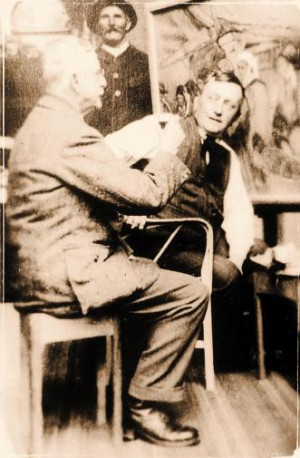Arthur Midy ( - )

Arthur Midy was born in Saint Quentin en Yveline. From the age of twelve, his talent as a painter was encouraged by the town, which awarded him several prizes and awards, and financed his training at the Beaux-Arts. At the same time, he followed an artistic training at the Académie Julian in Paris. He exhibited at the Salon des Artistes Français from 1897 to 1928.
At the age of 28, he discovered Le Faouët and began to paint genre scenes and landscapes, abandoning the historical or biblical subjects for which he had been trained. From then on he divided his life between Paris and Le Faouët. In 1914, it was he and David-Nillet who inaugurated the first Museum of Le Faouët, which at the time was limited to a room in the Town Hall. In 1921, Arthur Midy was appointed expert to the commission for the restitution of works of art seized in France by the Germans. This is how he met Émilie Maïer, who became his second wife in 1938. During all these years, he gradually moved from academic painting to the frank and quivering touch, paying more and more attention to the vibration of the light and to colours. He painted a lot on the ground, criss-crossing the countryside on his bicycle. His work is richly ethnographic. He painted all over Finistère and Morbihan. From 1925, he regularly exhibited at the Salon des Beaux-Arts in Lorient.
Arthur Midy and his wife met a tragic end. They were killed at the end of the Second World War by the Resistance, who thought that this Franco-German couple had made too much pact with the enemy.